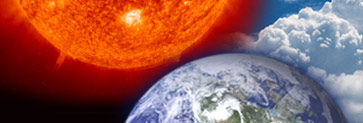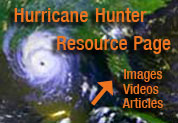| | Earth and Its Climate
Scientists at Goddard study land, sea, ice and air to understand our changing climate. We use our satellites, technology and know-how to peer into the ozone hole, see the ingredients of hurricanes, study earthquakes, gravity, pollution, melting glaciers and ice caps. We strive to understand and protect our home planet by learning more about it, and how to take care of it. See some of our most popular stories about climate, hurricanes, and environment below:
 Glaciers Surge When Ice Shelf 'Brakes' Break Up Glaciers Surge When Ice Shelf 'Brakes' Break Up
Changes in glacier flow surprises researchers.
+Read More
 Laser Technology Helps Track Changes in Mt. St. Helens Laser Technology Helps Track Changes in Mt. St. Helens
NASA scientists keep their eyes on a deforming Mount St. Helens.
+ Read More
 Amazing Success For Earthquake Forecasting Amazing Success For Earthquake Forecasting
A NASA funded earthquake prediction program has accurately predicted most of California's largest earthquakes this decade.
+ Read More
 2004 Ozone Hole Peaks 2004 Ozone Hole Peaks
The Antarctic ozone hole peaks in late September 2004.
+ Read More
 Hurricane Isabel: A Year Later Hurricane Isabel: A Year Later
The one-year anniversary of Hurricane Isabel - A highly studied hurricane
+ Read More
 NASA Tracks Pollution Worldwide NASA Tracks Pollution Worldwide
NASA and other agencies measured the movements of pollution around the globe.
+ Read More
The Sun, Our Closest Star
The Sun is a thermonuclear fusion furnace some 800,000 miles (1.3 million km) wide. It has been running for about five billion years, but if just one second of its output could be collected, it would power the entire United States for nine million years. Like any furnace, sometimes it's temperamental, unleashing explosions with the power of a billion one-megaton nuclear bombs, or blasting billions of tons of electrified gas or plasmas into space at millions of miles per hour. Such solar wind plasmas are always present and dramatically affect the geospace environment; however, harzardous conditions for technological systems and astronauts are greatly enhanced during these violent outbursts. Stormy solar activity occasionally disrupts satellites, communications, and power systems. NASA Goddard employs a fleet of missions to better understand the vital but restless Sun, our closest star. See some of our most popular topics about the Sun below:
 Helium May Set Solar Wind's Minimum Speed Helium May Set Solar Wind's Minimum Speed
Helium may act as a "throttle" for the solar wind, according to data from NASA's Wind spacecraft.
+ Read More
 Voyager at the Edge of the Solar System Voyager at the Edge of the Solar System
After 27 years of exploring, Voyager has officially reached the final frontier.
+ Read More
 Solar Fireworks Signal Space Weather Mystery Solar Fireworks Signal Space Weather Mystery
One flare with an unusually fast radiation storm has implications for space weather forecasting.
+ Read More
 The Sun Fires Up its Own Olympic Torch The Sun Fires Up its Own Olympic Torch
The torch may have traveled 48,000 miles but this solar blast took a 93 million mile route.
+ Read More
 Finding Other "SORCEs" of Earthly Sun-block Finding Other "SORCEs" of Earthly Sun-block
Sunspots, planets have the ability to block some of the Sun's Earth-bound rays.
+ Read More
 Solar Blast Blows Through the Solar System Solar Blast Blows Through the Solar System
Scientists track a solar explosion to the edges of the solar system.
+ Read More
| |




